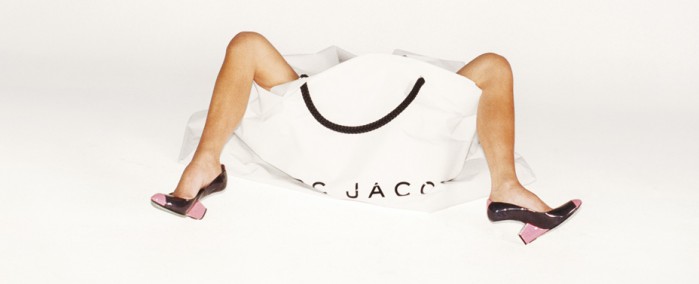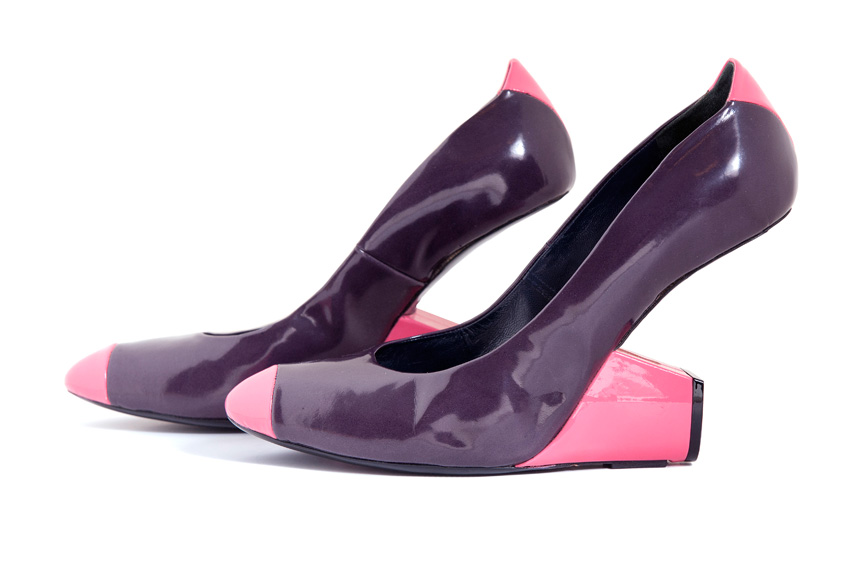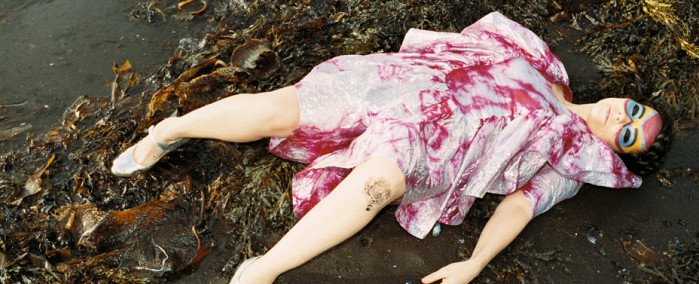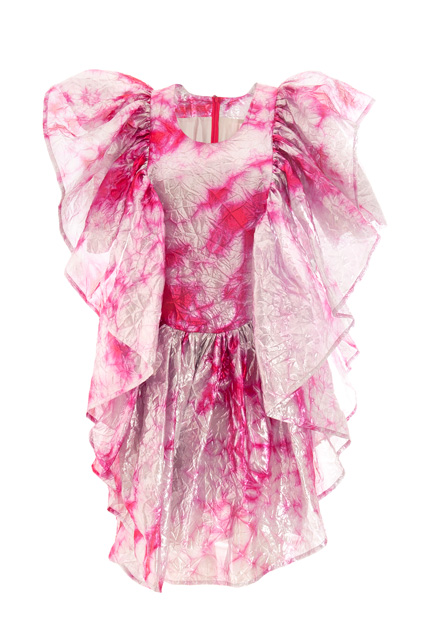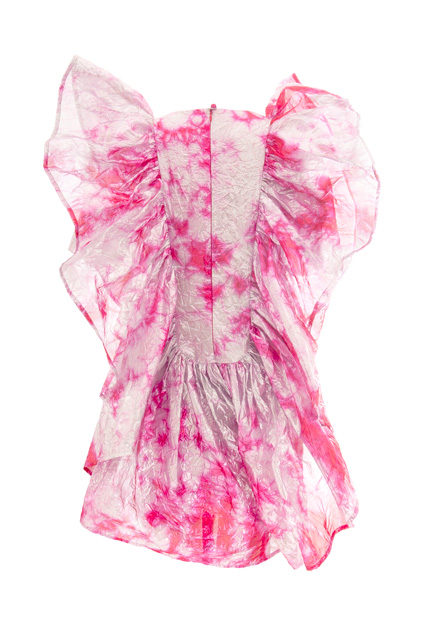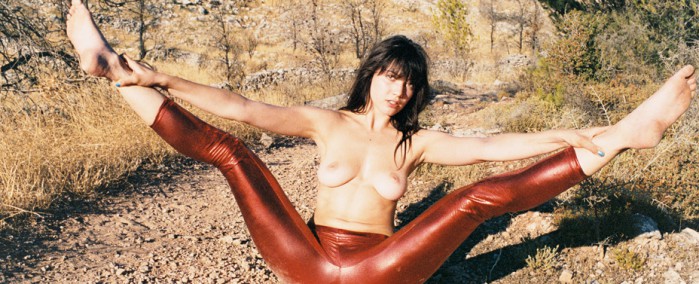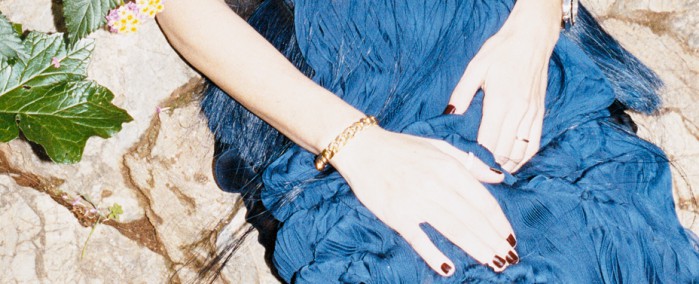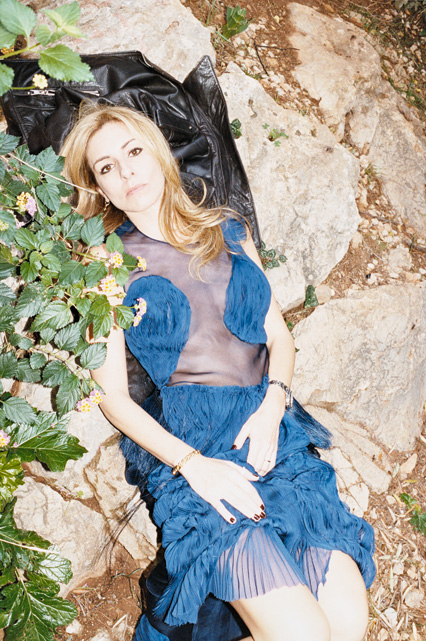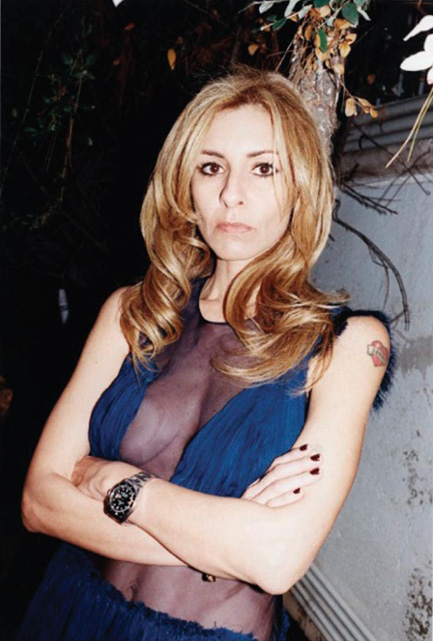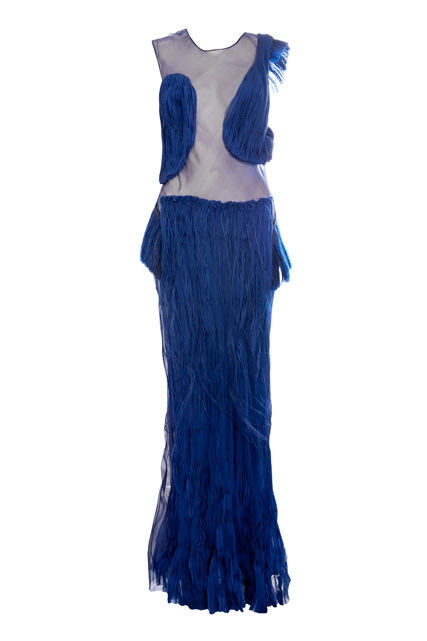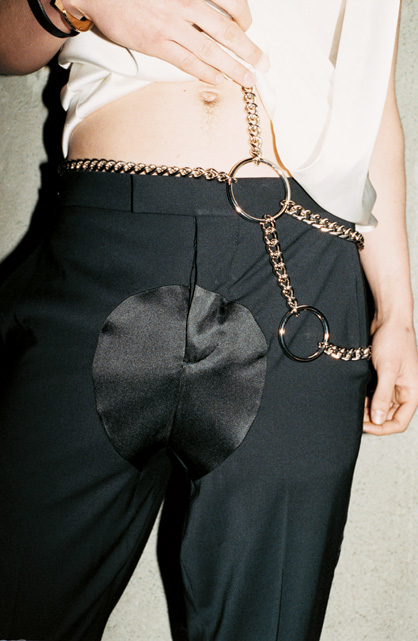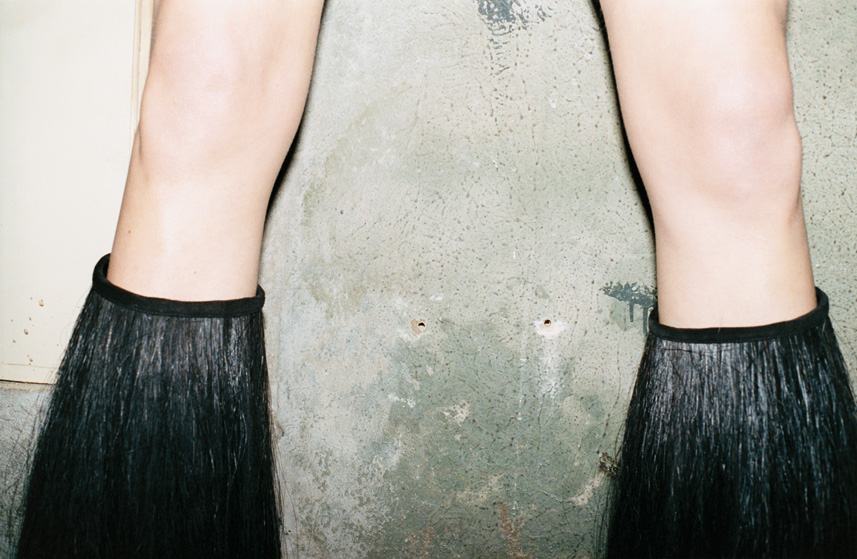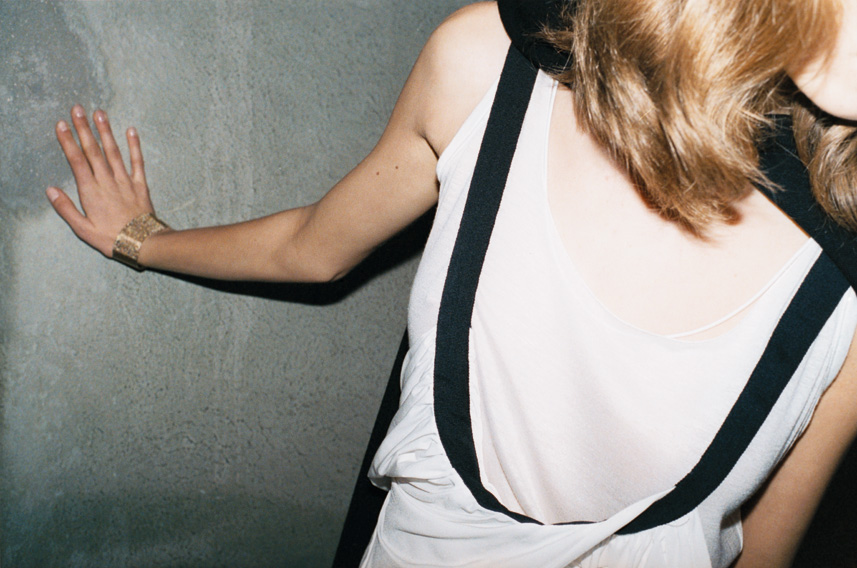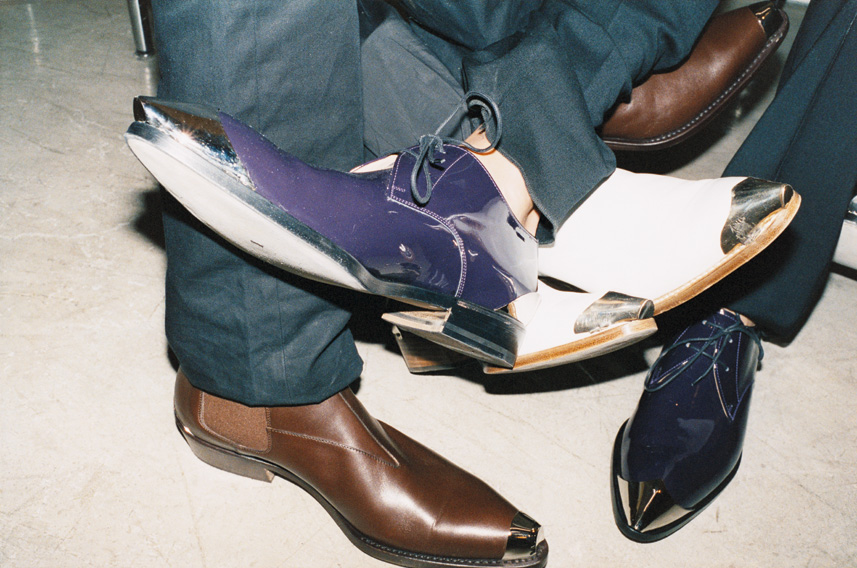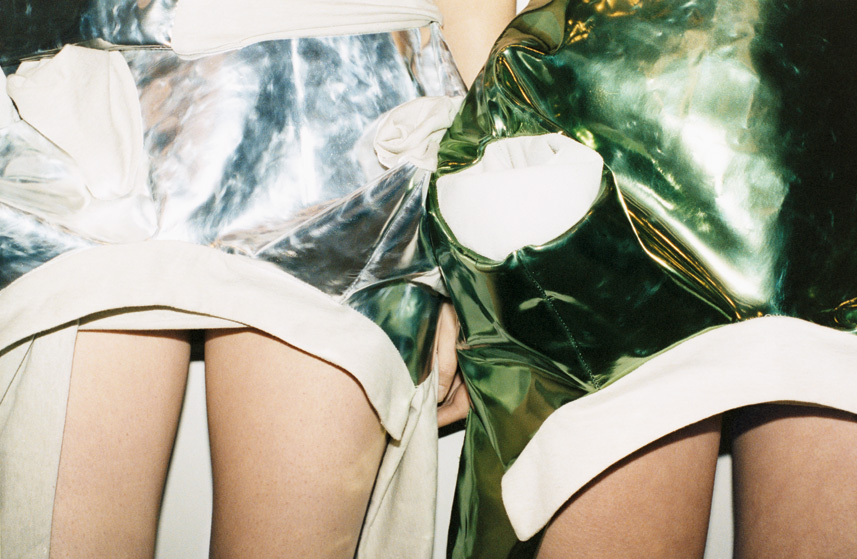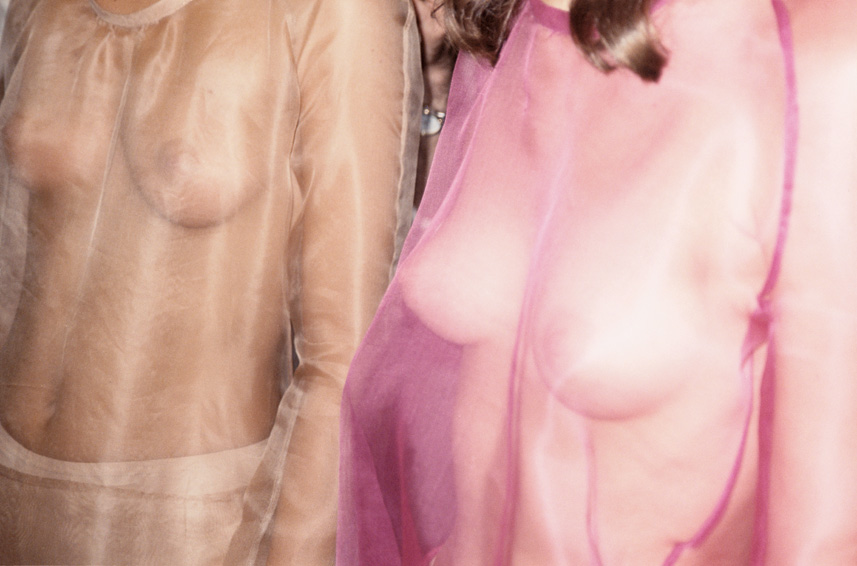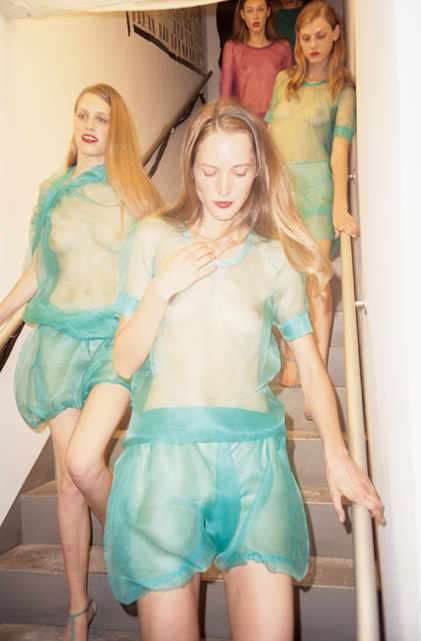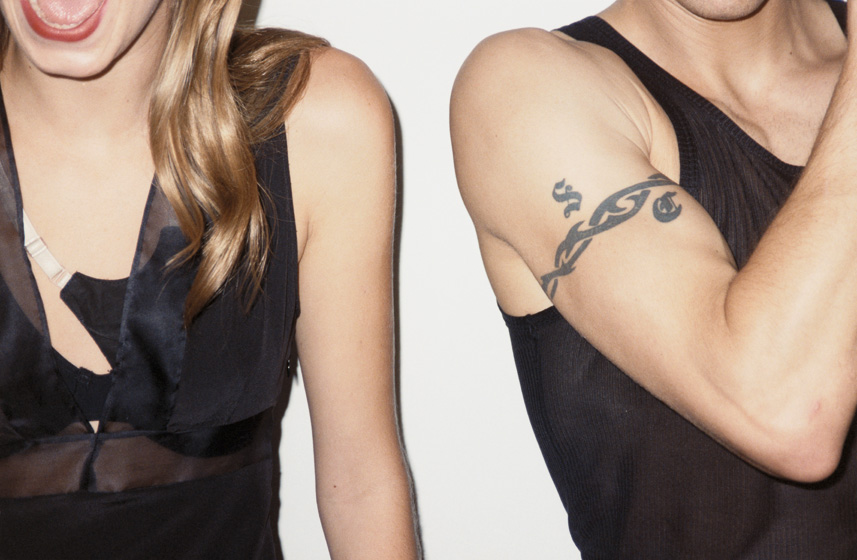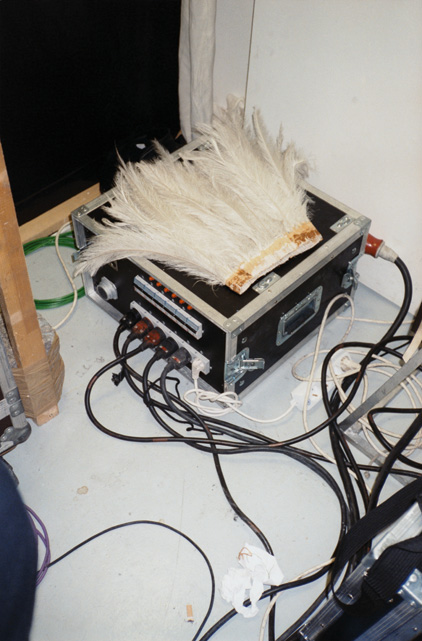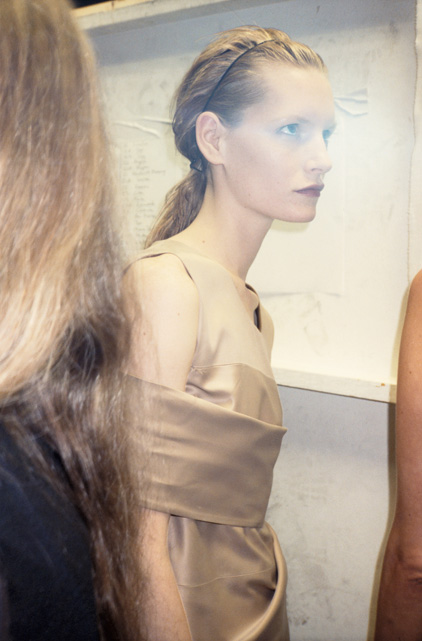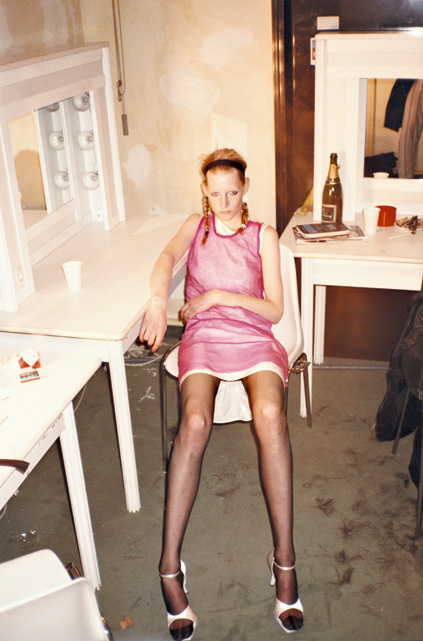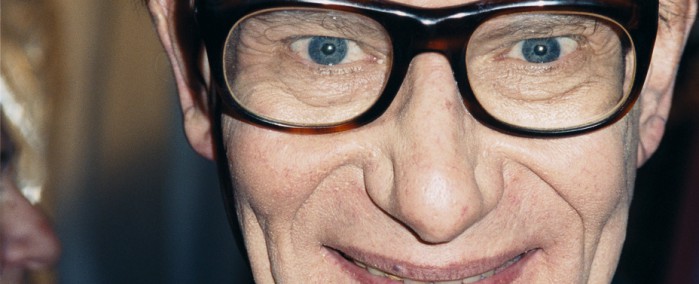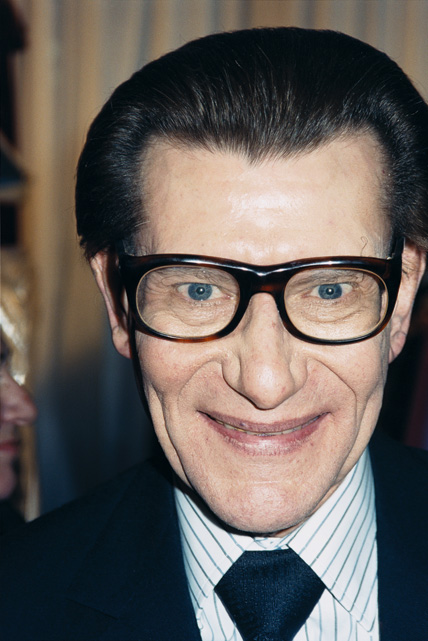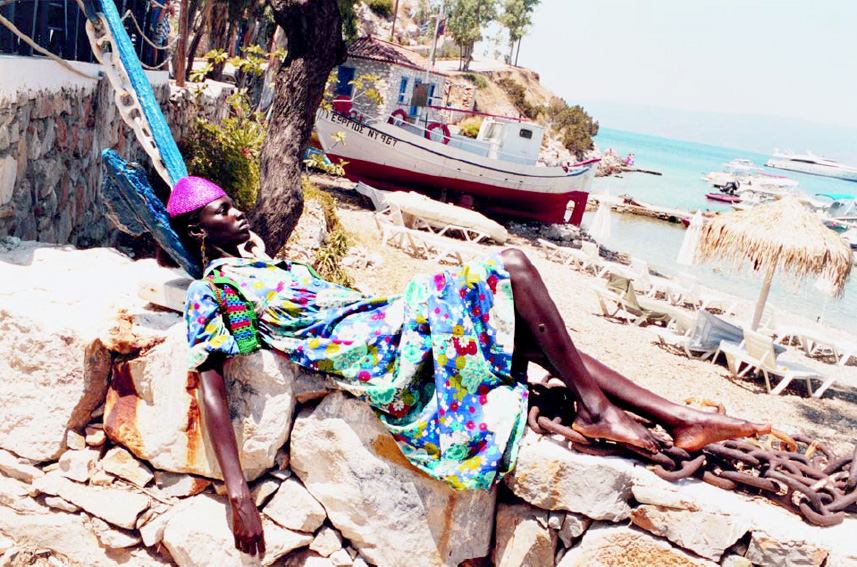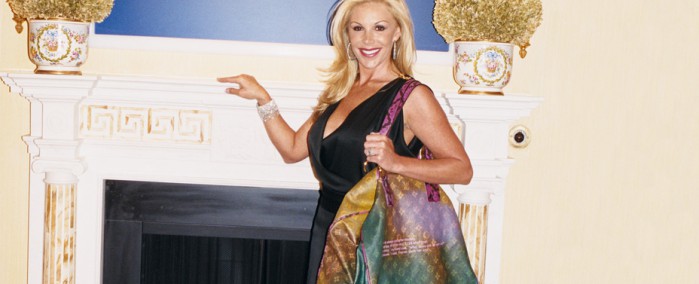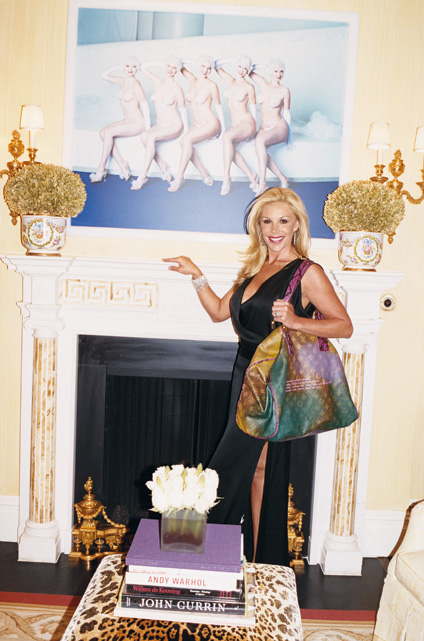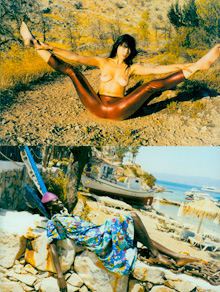Juergen Teller
FASHION & CELEBRITY
Object: MARC JACOBS shoes (Spring/Summer 2008)
The use of celebrities to promote fashion has grown apace over the last two decades, with Vogue covers now more likely to feature an actress than a model. Fashion has always used celebrities to promote, but the subversive Marc Jacobs campaigns reached a zenith recently with the choice of Victoria Beckham for the S/S campaign.
Famous for being famous and for her appetite for fashion and publicity, Beckham allowed herself to be used ironically and with humor, representing “brand Beckham” alongside brand Marc Jacobs. The most iconic image from the campaign doesn’t even feature Beckham’s face but has her legs emerging from a giant Marc Jacobs shopping bag: the consumer finally consumed.
Juergen Teller
TWO – BJORK
Object: BERNHARD WILLHELM laminated stage costume designer for Bjork (2008)
The Icelandic singer Bjork has a uniquely playful presence in fashion. She presents herself as an extreme sculptural object, preferring dynamic impact over flattering form, and completely ignores trends or restrictions of style to present her persona.
Bjork collaborates with young, up and coming European designers, and her recent stage costume (2008) was designed by Bernhard Wilhelm, with a head-dress of multicolored pompoms designed by a fashion student. Bjork is an example of an alternative engagement with fashion that is almost entirely self-curated, unique and anarchic.
Juergen Teller
THREE – FASHION & THE HIGH STREET
Object: AMERICAN APPAREL laminated trousers (2008)
The high street is how the majority of people experience fashion, in diluted versions of couture or ready-to-wear that are produced within weeks of their catwalk debut. This filtering of fashion is immediate, and top designers now collaborate with mass market companies to cover both ends of the spectrum.
One mass market company, American Apparell has rejected trends to triumphantly make cheap unpretentious sportswear sexy. They have done this with a worldwide advertising campaign of genius. Taken mostly by the owner of the company, the sportswear is photographed on ordinary looking men and women in saucy poses that establish themselves and the brand as genuine and believable. American Apparel appeals to the young in addition because the clothing is produced in Los Angeles under ethical conditions rather than in the sweatshops of the Third World.
FOUR – MISSING HEROES OF FASHION
Juergen Teller
Object A: HELMUN LANG organza dress (Fall/Winter 2004-2005)
Helmut Lang, along with several other key designers such as Jil Sander and Calvin Klein, sold his fashion label to a large fashion corporation. Although his name still carries a fashion brand, he and his formidable talent leave a giant hole in fashion that is impossible to fill. The clothes of Lang, a ground-breaking designer who was always progressively modern rather than retrospective, can now only be bought on ebay or in specialist vintage shops.
Juergen Teller
Object B: YSL
A huge loss this year for fashion.
Juergen Teller
FIVE – FASHION & ART
Object A: LOUIS VUITTON Richard Prince handbag (2008)
This season’s Louis Vuitton collaboration with American artist Richard Prince illustrates the commercially successful marriage of fashion with art that has become a defining trend in fashion this century. Louis Vuitton are the most consistent example of this, having used Murakami, Stephen Sprouse, Warhol and other artists in a series of intelligent projects that allow the artist to directly interfere with their most precious asset, the LV brand. This interference at once undermines and re- establishes the LV logo through reinvention and context, giving the limited edition product ranges the elevated status of collectible and rarefied items, associated with the rarefied values of fine art. Prince is particularly suited for this collaboration given his appropriation of existing images (Cowboys, Girlfriends, car-hoods, advertising images and cartoons) reworked re- contextualized within his work.
